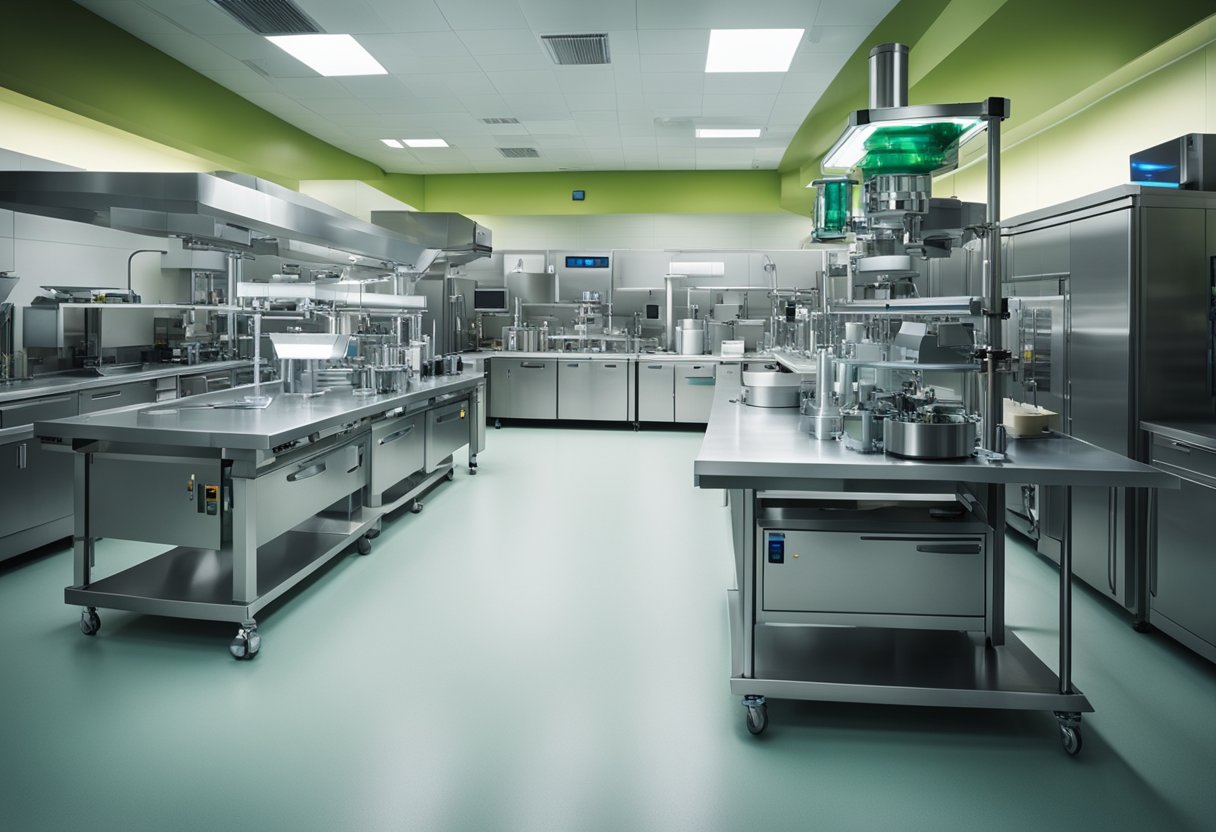
As we venture beyond the confines of Earth, the significance of maintaining astronaut health through proper nutrition in space travel has become increasingly apparent. Adequate nutritional support is essential for the success of missions, particularly as the duration of spaceflights extend and missions aim towards more distant destinations such as Mars. The microgravity environment of space, along with other factors like altered circadian rhythms and radiation exposure, has a profound impact on the human body, affecting muscle mass, bone density, and the cardiovascular system. Understanding the relationship between these physiological changes and nutritional needs is crucial for developing effective dietary strategies to support astronaut health and mission success.
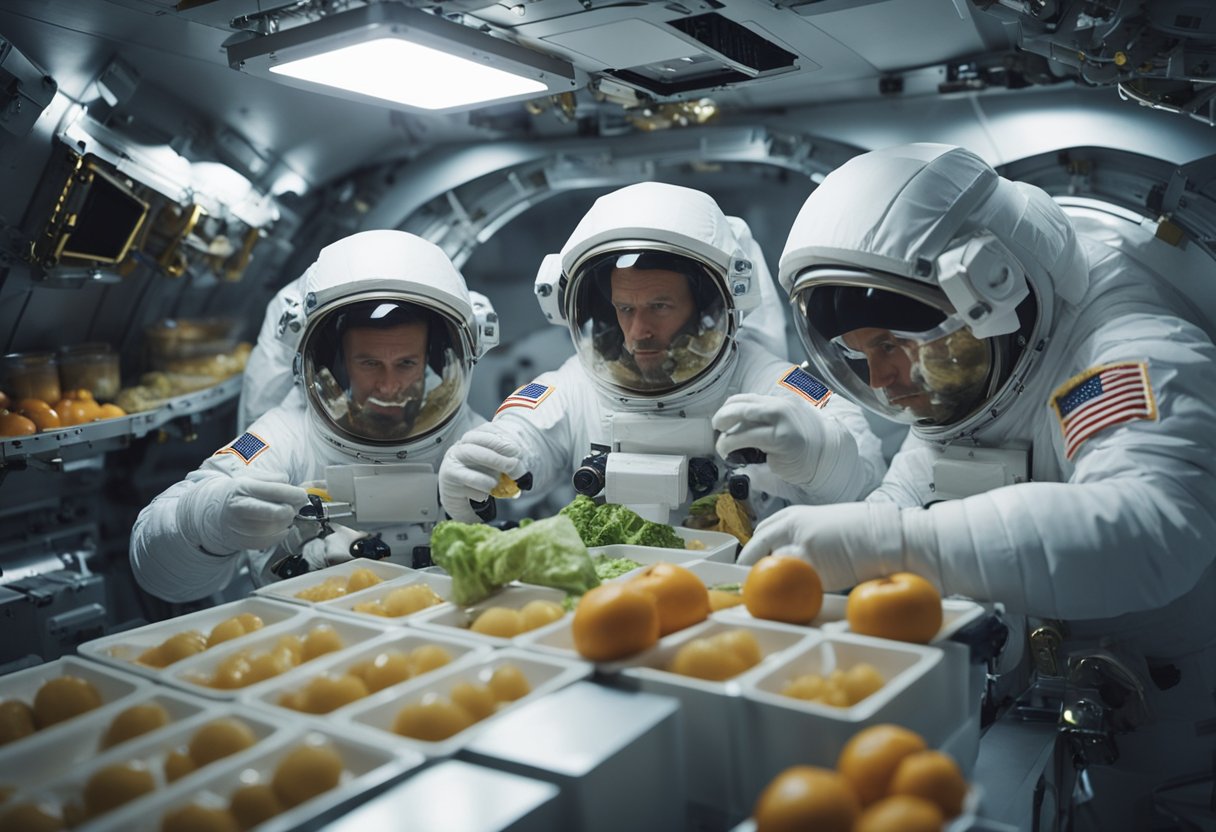
Advances in space nutrition research have led to improved dietary guidelines and food systems designed to sustain astronauts. Nutritional strategies now focus on addressing the unique needs that come with long-duration missions, such as nutrient stability, palatability, and the psychological benefits of meals. Innovations in food technology enable a variety of foods to be safely stored and consumed in space, contributing to both the physical well-being and morale of crew members. These strides in space food technology and nutrition science also have the potential to benefit nutritional research on Earth, providing insights into sustainable food systems and human physiology under unique stressors.
In human spaceflight, nutrition plays a pivotal role in maintaining the health and performance of astronauts. With the unique challenges presented by microgravity and the closed environment of a spacecraft, fulfilling the nutritional requirements for astronauts becomes a finely-tuned science.
We must carefully select nutrients to support astronauts’ physiological needs during space flight. The provision of balanced dietary intake is critical, as it must counteract the effects of microgravity on the body and ensure the maintenance of bone density, muscle strength, and overall health.
Our understanding of these needs allows us to customise nutrition plans which are vital for the well-being of the crew during and after their mission.
Microgravity presents unique challenges to human physiology that influence nutritional needs. Our body’s distribution of fluids is altered, which can affect absorption and metabolism of nutrients.
Understanding the interplay between these factors and human physiology is critical for maintaining astronauts’ health on long-duration spaceflights. Through rigorous research and careful meal planning, we support space travellers in meeting their unique nutritional requirements.
When we journey beyond Earth’s atmosphere, our bodies undergo significant physiological changes due to the unique conditions of space. The absence of gravity, high levels of radiation, and enclosed spacecraft environments play a substantial role in altering our bodily functions, requiring meticulous management to ensure astronaut health.
In the microgravity environment of space, our bodies encounter a range of physiological changes. Fluid shifts towards the upper body, causing facial puffiness and pressure on the eyes, potentially impacting vision. The lack of gravity means our vestibular system, responsible for balance, must adapt to the new lack of orientation. Studies have shown these adjustments can lead to spatial disorientation and motion sickness, affecting sensory and motor functions.
Bone and muscle health are perhaps the most studied aspects of space physiology. Without the usual gravitational forces, bone resorption increases, leading to a loss of minerals and an elevated risk of developing osteoporosis. Bone formation rates are diminished, resulting in an overall reduction in bone density.
Muscle mass also deteriorates in space, with studies indicating a decrease in strength and endurance. This combination of bone and muscle degradation poses a serious challenge for long-duration space missions, necessitating the regular use of resistance exercises to mitigate these effects.
The cardiovascular system also adapts to the microgravity conditions of space. We observe a change in heart shape, as it becomes more spherical, potentially impacting its efficiency. Our blood volume diminishes, and the vascular system adjusts in response to fluid redistribution.
Our immune system responds differently in space, too; its function may be altered, lowering our defences against infections. This is a complex interaction affected by various stressors, including the psychological stress of confinement, disruption of circadian rhythms, and increased radiation exposure. It’s paramount that we monitor and support cardiovascular and immune health to safeguard astronauts on their voyages, particularly as we look towards the possibilities of space tourism documented on sites like SpaceVoyageVentures.com.
As we prepare for the prolonged expeditions to places like Mars and aim to sustain human presences on the International Space Station, we must establish comprehensive nutritional strategies. Ensuring a balanced intake of nutrients is crucial, as is developing countermeasures to prevent nutritional deficiencies.
To maintain health over long-duration missions, we’ve identified the need for a balanced diet that contains all necessary nutrients in the correct amounts. Food choices must provide:
On the International Space Station, a variety of international foods help to meet these requirements, but for missions to Mars, the planning is more complex. Nutrient stability and food variety become even more critical due to the longer duration and limited resupply opportunities. We’re exploring long-term space nutrition techniques to overcome these challenges.
To mitigate nutritional deficiencies, our strategies include:
We’ve established these countermeasures to ensure astronauts remain at peak health, and we’re investigating the ways we can incorporate nutritional requirements for exploration missions into future food systems for long-duration spaceflights.
As we examine the transformation and technological advancements in space food, it’s essential to understand that this reflects an ongoing response to the unique challenges of providing safe, nutritious, and palatable meals to astronauts during space missions.
Space food systems have come a long way since John Glenn first ate applesauce in space aboard the Friendship 7. Early missions were limited to semi-liquid foods in squeeze tubes, but today, space food evolution has shifted towards more complex systems. We’re working to create food production technologies that require minimal inputs, yet effectively deliver safe and nutritionally balanced food. These advances are necessary for the sustainability of longer missions, where re-supplying from Earth is not an option.
Recent developments in space food systems focus on enhancing shelf life and packaging to ensure food quality is maintained from launch through consumption. On-board food must be lightweight and compact, and at the same time, it must withstand the intense vibrations of launch and the absence of gravity. Importantly, packaging technology is also advancing to improve barriers against moisture and oxygen, significantly enhancing the shelf life of space food.
Strides in food preservation techniques have been crucial for improving the variety and nutritional value of space diets. We’ve improved freeze-drying methods that retain taste and texture, as well as high-temperature thermal sterilisation to ensure food safety. Implementing such technologies allows us to supply a variety of foods that can last for the duration of long-term missions.
Preservation technology continues to evolve. Our objective is to extend shelf life even further, while minimising preservatives, to deliver food that is as close as possible to what one might find fresh on Earth. For space tourists who may soon embark on journeys they’ve read about on SpaceVoyageVentures.com, these advancements in space food technology will be key to ensuring their trip is not only exhilarating but also nourishing.
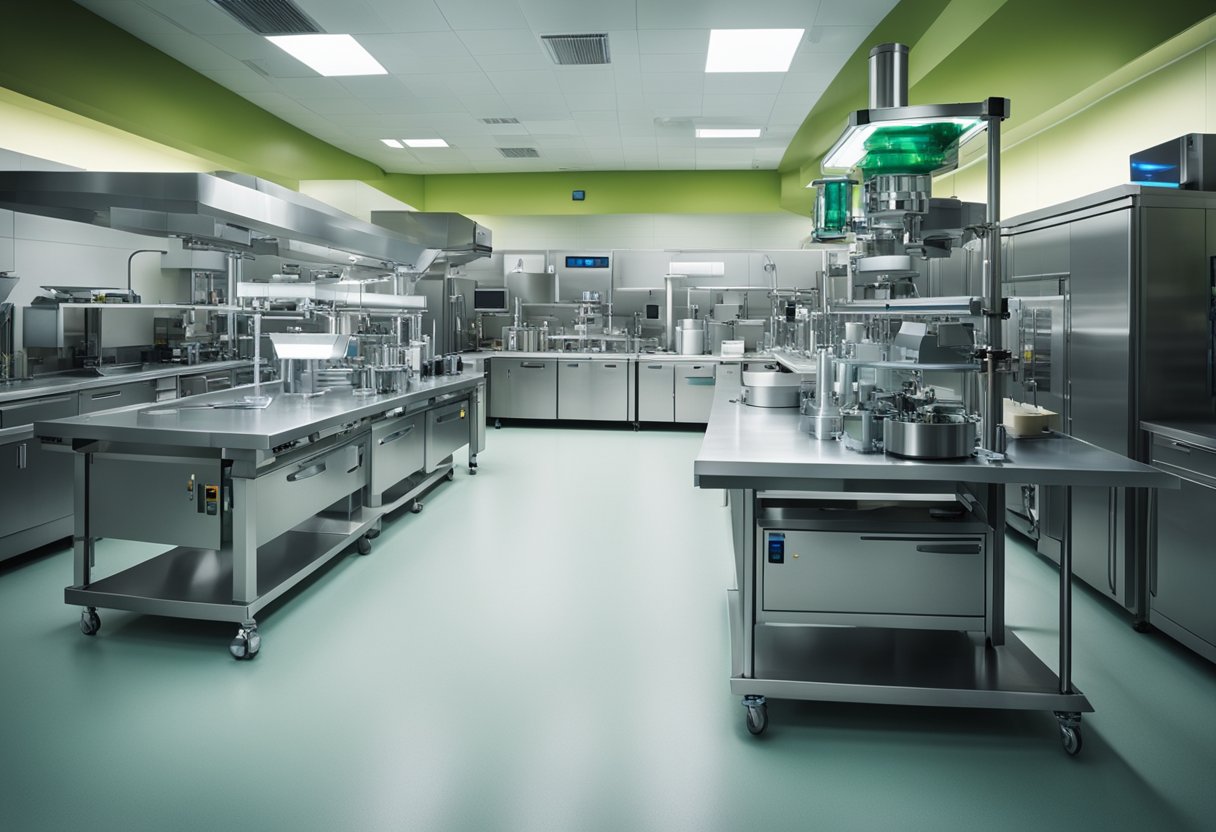
We observe that space agencies are continuously updating and expanding their knowledge on space nutrition, aiming to optimise astronaut health and mission success. These advancements focus on understanding the unique nutritional needs prompted by microgravity environments and prolonged missions.
At the NASA Johnson Space Center, the Human Research Program is actively conducting space nutrition research to determine astronaut dietary requirements for optimal health. They are particularly interested in how microgravity affects the absorption and metabolism of nutrients. Studies have revealed that a balanced astronaut ration is essential to prevent pathophysiological alterations that can occur in space. Nutritional strategies are being developed both to enhance the quality of life aboard spacecraft and to mitigate the risks of long-term health issues for crew members. NASA prioritises the need for tailoring diets to prevent nutrient deficiencies and counteract bone density loss and muscle atrophy, common concerns in zero-gravity environments.
Our collaborative efforts extend to the International Space Station (ISS), where multinational crews serve as subjects for space nutrition research. Drawing on expertise from the Ames Research Center and international partners, we are exploring new food technologies and diet regimes. These international collaborations are crucial for preparing for future deep-space missions where resupply is improbable. By sharing insights on maintaining nutritional intake and a food system’s sustainability in space, we contribute to a corpus of knowledge that will support astronauts on their journey to Mars and beyond.
As we progress in our journey of space exploration, the proper assessment of dietary intake has become integral. In microgravity, monitoring food intake and health parameters is crucial for maintaining the well-being of astronauts. Customising diets for individual nutritional requirements ensures their health, performance, and mission success.
We meticulously track every astronaut’s food intake using sophisticated tools and methods. For instance, the ISS Food Intake Tracker (ISS FIT) aids astronauts in recording their meals easily, ensuring accurate monitoring of their diet. Astronauts’ blood, urine, and saliva samples are routinely analysed to watch for critical markers such as calcium levels, which can indicate bone density—a paramount concern in the absence of gravity.
Regular assessment of nutritional intake during space flights is performed to address body mass fluctuation, bone and muscle health, and nutrient storage. The precise measurement of what and how much is consumed allows us to detect patterns that may require dietary adjustments. Blood analysers on space missions even give us the ability to monitor blood glucose levels in real time, which is akin to how we might analyse other nutritional biomarkers.
Our dietary planning is not a one-size-fits-all affair. Instead, every astronaut’s diet is tailored to meet their specific nutritional requirements. We consider factors like an astronaut’s individual health profile, activity level, and the mission’s duration. We also ensure that the diets are rich in nutrients that might be depleted in space, such as Vitamin D and calcium. Our strategy includes fortifying foods and possibly providing dietary supplements.
Customising diets enables us to cater to physiological and psychological needs. We consider factors such as taste preferences and the psychosocial benefits of food, which can contribute immensely to the morale of the crew. It’s a balance of the science of nutrition and the art of culinary satisfaction—a combination we take pride in mastering on behalf of our intrepid space travellers.
As we continue to partner with organisations like SpaceVoyageVentures.com, we integrate this critical knowledge into educational materials that inform and inspire potential space tourists about the realities, including dietary considerations, of space travel. Understanding nutritional science becomes not only a matter of professional necessity but also part of preparing the general public for the experiences ahead.
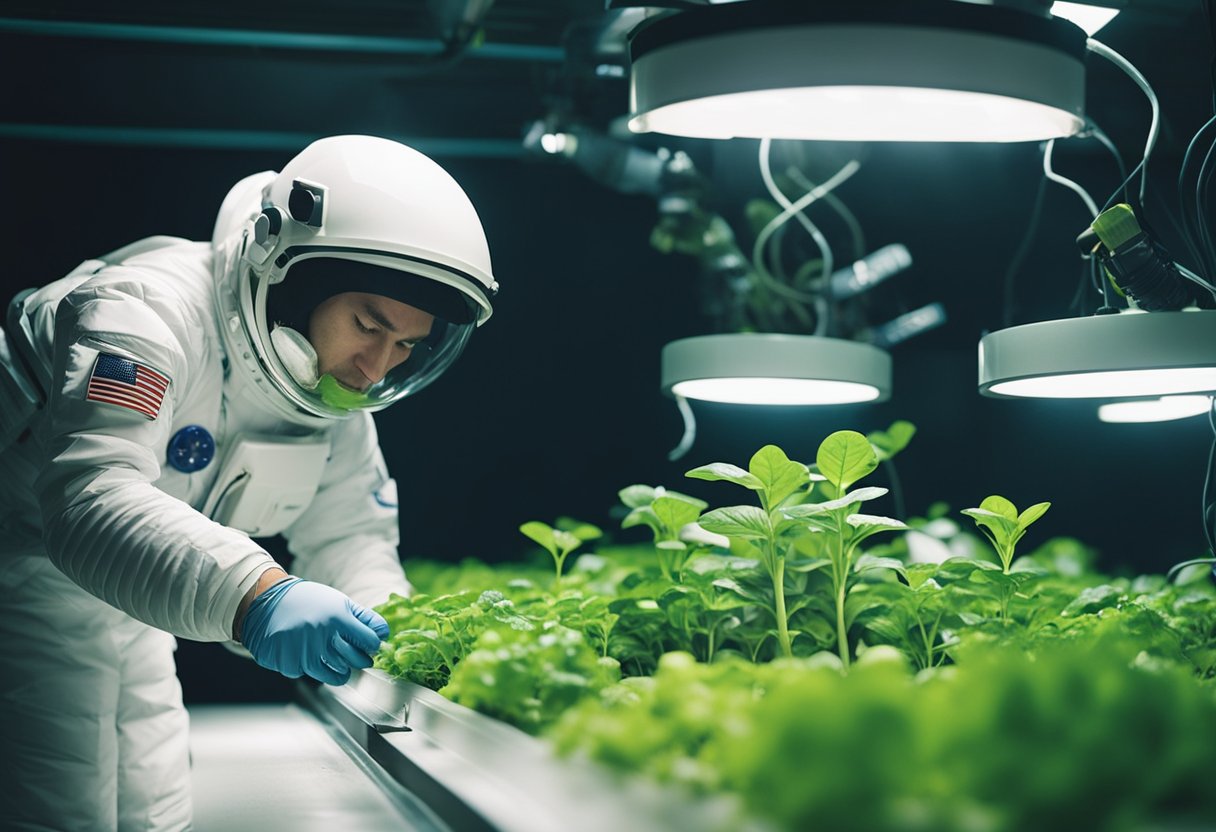
When considering human spaceflight, one of the most critical aspects we must address is the provision of fresh food. Fresh produce not only offers essential nutrients but also contributes to psychological well-being.
We have successfully integrated fresh food into astronauts’ diets aboard the International Space Station (ISS). By utilising the Veggie Plant Growth System, astronauts have been able to cultivate and consume fresh vegetables, including red romaine lettuce. This initiative not only supplements the pre-packaged diet but also serves as a study for understanding plant growth in space. However, we face challenges such as limited space for growth modules and the necessity for continuous monitoring and maintenance.
In a microgravity environment, growing crops presents its own set of challenges. Plants rely on gravity for directionality, which influences root growth and nutrient uptake. We are exploring different frameworks to support crops, including fruits and vegetables, in the absence of gravity. Some systems use a soil-less approach, like hydroponics and aeroponics, which have shown promise aboard the ISS. Adapting these systems to work effectively and sustainably requires careful planning and ingenuity, ensuring that crops can thrive despite the lack of gravity’s guidance.
Exposure to space radiation is a significant risk for astronauts, with the potential to affect their health both during and after missions. Our understanding of these risks informs the development of protective strategies, including nutritional countermeasures rich in certain compounds, such as omega-3 fatty acids, to mitigate the effects.
Space radiation consists of high-energy particles that can penetrate tissue, leading to cellular damage and an increased risk of health issues including cancer. In the unique environment of space, where shielding options are limited, radiation remains one of the most formidable challenges. It is critical that we find effective countermeasures to protect our astronauts, especially with the advent of longer missions and the rise of enterprises like SpaceVoyageVentures.com considering the future of space tourism.
From our research, specific dietary components have emerged as potential nutritional countermeasures to combat the effects of radiation exposure. Notably, omega-3 fatty acids have been highlighted for their antioxidative properties which may help to protect cells from radiation-induced oxidative stress. Ensuring an adequate intake of these essential nutrients can be part of an overall strategy to counteract the negative health impacts of radiation in space.
Adapting space food systems to include such countermeasures may prove vital in enhancing astronaut health and ensuring the success of future space explorations and tourism.
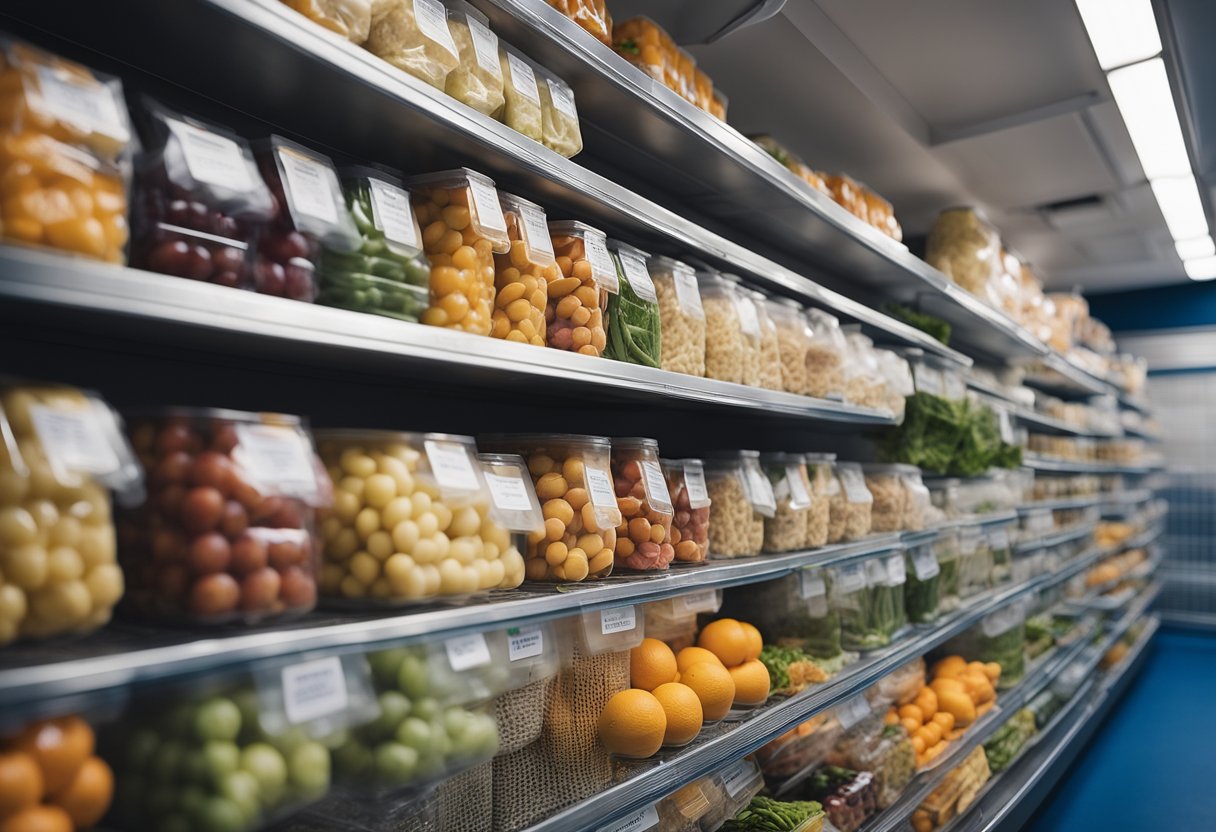
Ensuring a diverse range of foods is essential for both physical health and psychological well-being during extended space missions, such as those to the Moon. We recognise that a well-considered food system is vital to combat the monotony which can lead to anorexia and fatigue.
A diverse menu is more than a luxury on spacecraft; it’s a necessity for maintaining morale. Space food selection, therefore, includes a wide array of flavours and textures to prevent menu fatigue. For instance, having access to a variety of spices and condiments allows astronauts to personalise meals, offering a semblance of Earthly routine and culinary autonomy in the vast expanse of space. The introduction of fresh produce into space diets not only provides essential nutrients but also offers psychological comfort. Our aim is to ensure that even on the Moon, astronauts can enjoy their meals, which is critical for a healthy diet and overall mental health.
Prolonged isolation and confinement can take a toll on astronauts’ mental health. Our experience tells us that varied and palatable meals can serve as a coping mechanism in these challenging conditions. In the confined quarters of a spacecraft, meal times become a focal activity that breaks the monotonous cycle and encourages social interaction. Ensuring that astronauts have access to their preferred food options can significantly bolster spirits and help mitigate the sense of isolation. Within discussions at SpaceVoyageVentures.com, we’ve explored how the simple pleasures of a good meal can remind astronauts of home, making the demands of a lunar mission more bearable.

When embarking on space voyages, it’s crucial to ensure that food packaging is both compact and lightweight while also maintaining the nutritional value and lengthening the shelf life of food items.
We prioritise creating packaging that takes up minimal space and adds as little weight as possible to our payload. In space, every gram counts, and thus, we’ve advanced the design of our food containers to be ultra-compact. Utilising materials like flexible laminates that can be flattened after use, we reduce the volume that packaging occupies aboard spacecraft.
Increasing the shelf life of food in the zero-gravity environment is a significant challenge. Our team uses innovative technologies such as high-barrier films which guard against oxygen and moisture—two key factors that lead to food degradation. Advanced techniques in the preservation, including vacuum packing and radiation processing, ensure that our food retains its nutritional quality and remains safe for consumption over long periods.
By focusing on these cutting-edge packaging solutions, we’re confident in our ability to support both current space missions and those that might be featured by SpaceVoyageVentures.com, as humanity reaches towards a future of space exploration and tourism.
In this section, we address some of the most common inquiries regarding how nutrition is managed during space missions.
Astronauts maintain a balanced diet in space by consuming a variety of pre-packaged meals that have been carefully planned to include all essential nutrients. These meals are designed to provide the necessary vitamins, minerals, proteins, and carbohydrates required for the health and well-being of crew members.
There have been significant advancements in space nutrition, including the development of new food packaging that extends shelf life and the use of hydroponics to grow fresh produce on space stations. Researchers continue to improve food variety, quality, and flavour for long-duration missions.
Microgravity can impact both dietary requirements and the way astronauts consume food. It can alter fluid distribution and nutrient absorption in the body. As a result, the dietary plans for space flights are specifically adjusted to counteract these changes and ensure astronauts receive the nutrients they need for energy and bone density.
Food for space missions is packaged and preserved using methods such as freeze-drying and vacuum-sealing to minimise weight and waste, while ensuring nutritional value, safety and taste are maintained. Technologies used also ensure the withstanding of various temperature changes and radiation levels encountered in space.
Designing a food system for space missions encompasses several challenges, including ensuring food stability and nutritional adequacy for extended periods, providing variety to prevent menu fatigue, and minimising the weight and volume of food packaging. Food must also be palatable and easy to consume in a microgravity environment.
Astronauts’ nutritional needs differ primarily due to the effects of microgravity, which can lead to muscle and bone loss. They require more vitamin D in the absence of natural sunlight, as well as tailored nutrient profiles to mitigate the health risks of radiation and altered fluid distribution in the body.